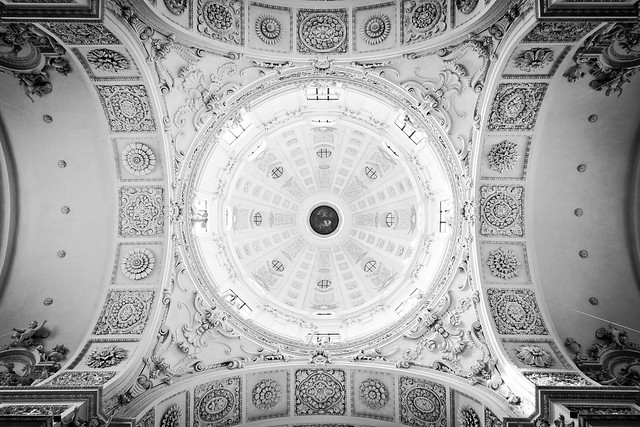 This was about
as much as the angry young man could take. He sprang up and challenged the old
man. “You’ve got your facts all wrong” he charged. The Basilica was built on
the maidan outside of the walls of
the Bijapuri city of Goa. There was no temple there. And that’s not all, the
church you are referring to is the church of St. Cajetan. And here too you are
wrong. The church sits within what was the very heart of the citadel of the
fortified Bijapuri city. The well we see today is the result of the architect’s
attempt to drain the soil so that he could sink the massive foundations he
needed to raise the huge dome of St. Cajetan’s. Further, we need to decide who
were the bad guys, the ‘Muslims’ or the ‘Portuguese’, they both cannot have
destroyed the same temple can they? That is, if there was any temple destroyed
in the first place!”
This was about
as much as the angry young man could take. He sprang up and challenged the old
man. “You’ve got your facts all wrong” he charged. The Basilica was built on
the maidan outside of the walls of
the Bijapuri city of Goa. There was no temple there. And that’s not all, the
church you are referring to is the church of St. Cajetan. And here too you are
wrong. The church sits within what was the very heart of the citadel of the
fortified Bijapuri city. The well we see today is the result of the architect’s
attempt to drain the soil so that he could sink the massive foundations he
needed to raise the huge dome of St. Cajetan’s. Further, we need to decide who
were the bad guys, the ‘Muslims’ or the ‘Portuguese’, they both cannot have
destroyed the same temple can they? That is, if there was any temple destroyed
in the first place!”
The scene
becomes ever more complex if one leaves the urban contexts of the city of Goa
and heads into the villages that surrounded this core of Portuguese domination
in the sixteenth century. To begin with, most people make the mistake of
assuming that the countryside around the city was a Hindu space. This is a
popular misconception. The land was teeming not just with Hindus (that is to
say brahmanised castes) but with a variety of subaltern and untouchable groups,
as well as Muslims and other social and cultural groups. If sacred sites were
taken over, then these sites could have also belonged to groups beyond the
brahmanised castes. Indeed, because of what we know of the history of the location of Goan churches, one could safely assume that if a sacred site was
repurposed then it was the shrines of the marginal groups that suffered this
fate.
What then do we
make of the fond myths that have been told and retold for generations? Take the
case of Margão for instance. We are told that the (Brahmin) villagers of Margão
offered any space in the village for the church, but requested that their
temples be spared. Unheeding the Bishop is said to have cast a sword into the
air and toward the temple of Damodar causing this temple to be displaced to
make way for today’s Church of the Holy Spirit.
Contrary to
widespread beliefs today, temples did not come up at the whim and fancy of
people. There was an entire cosmology that allowed for temples to emerge. To
sustain its growth the brahmanical order would first set up the temple of a
brahmanical or brahmanised temple. Other deities would then be constructed as
minor and hierarchical relations constructed between this main deity and the
minor deities. In this process, those who worshipped the inferior deity were
also crafted as inferior. This is another story, however, and it connects with
the theme of this column only to the extent of making the point that we need to
realise that very often, the missionaries chose to avoid sites of the dominant
castes and constructed their churches outside of village centres. The myth of
the destruction of temples to facilitate the building of churches over them
therefore needs to be revisited and systematically examined for the facts in
each case.
(A version of this post was first published in the Herald dated 13 June 2014)

1 comment:
Well researched and timely. Thank you for adding to intellectual discussion on the subject.
Post a Comment